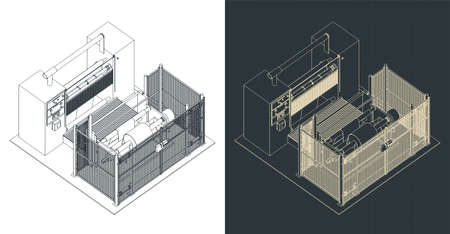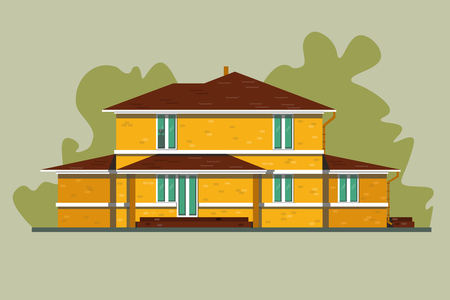Introduction to Feng Shui and Its Relevance in the UK
Feng Shui, an ancient Chinese practice rooted in the art of harmonising one’s environment, has found a unique resonance within the UK’s diverse architectural landscape. Traditionally, Feng Shui focuses on balancing energies within a space to promote wellbeing, prosperity, and tranquillity. British homeowners and interior designers are increasingly embracing these principles, adapting them to suit both historic properties and modern developments across the nation. With growing awareness of holistic living and mindful design, Feng Shui’s influence is evident in everything from cosy London flats to countryside cottages. This integration reflects a broader shift towards creating homes that not only reflect personal style but also nurture positive energy—making Feng Shui remedies such as the strategic use of mirrors particularly appealing for counteracting negative architectural features in British homes.
Understanding Negative Architectural Features
When it comes to achieving harmony and balance within British homes, Feng Shui provides a unique lens through which we can evaluate the impact of architectural elements on energy flow. Many traditional British properties, from Victorian terraces to modern flats, often present certain design features that, according to Feng Shui principles, may disrupt the natural movement of positive energy—or “qi.” Identifying these problematic features is the first step in remedying their effects with strategic solutions such as mirrors.
Common Problematic Design Elements in British Homes
British architecture is rich in history but not always designed with energy flow in mind. Below is a table highlighting some typical architectural challenges found in UK properties and their potential impact according to Feng Shui:
| Architectural Feature | Description | Potential Feng Shui Impact |
|---|---|---|
| Sharp Corners (Poison Arrows) | Angular corners pointing directly at seating or sleeping areas | Creates harsh energy, leading to discomfort or tension in affected spaces |
| Narrow Hallways | Long, confined corridors common in terraced houses and flats | Restricts smooth qi flow, potentially causing stagnation and a sense of confinement |
| Odd Room Shapes | L-shaped or irregularly shaped rooms due to conversions or extensions | Makes it difficult for energy to circulate harmoniously, resulting in imbalance |
| Beams Overhead | Exposed structural beams above beds or seating areas | Weighs down energy, possibly affecting wellbeing and sleep quality |
| Main Door Alignment Issues | Main entrance directly aligned with back door or large windows | Allows beneficial energy to rush out too quickly, reducing stability and prosperity |
The Unseen Influences on Everyday Life
These negative features can manifest subtly in everyday life—perhaps as persistent fatigue, tension among household members, or a general sense of unease. While British homes are cherished for their character and heritage, integrating Feng Shui principles allows residents to reinterpret these unique spaces, identifying where energy might be blocked or misdirected. Understanding these architectural quirks is essential before applying any Feng Shui remedies such as mirrors, ensuring that interventions are both culturally sensitive and truly effective.

3. Mirrors as a Classic Feng Shui Remedy
Mirrors have long held a revered place in the toolkit of Feng Shui practitioners, both in the East and increasingly in the West. Traditionally, mirrors are considered powerful agents for redirecting and balancing energy—known as Qi—within a living space. The rationale stems from ancient Chinese wisdom, which teaches that mirrors can reflect negative energies away from the home or dissipate sharp, disruptive lines created by awkward architectural features such as exposed beams, staircases facing doors, or oddly angled walls.
Modern interpretations in Western contexts have adopted and adapted these principles, often reframing them within the language of psychology and interior design. In Britain, for example, mirrors are prized not just for their practical function or decorative appeal, but also for their perceived ability to open up cramped Victorian terraces or redirect light into dark corners typical of period properties. This duality—honouring tradition while embracing innovation—underscores how mirrors serve both aesthetic and energetic purposes.
Whether used to symbolically dissolve negative influences or to enhance natural light in a manner beloved by British homeowners, the strategic placement of mirrors bridges cultural understandings. From an Eastern perspective, they act as protective shields and energy harmonisers; from a Western standpoint, they contribute to wellbeing by creating more inviting, luminous spaces. Thus, integrating mirrors as a remedy is not merely about superstition but represents a thoughtful blend of heritage and contemporary living—a practice that resonates deeply with those seeking harmony in their homes today.
4. Best Practices for Placing Mirrors in British Homes
In the context of British homes, which often feature distinctive layouts such as Victorian terraces, Georgian townhouses, or modern flats with limited space and variable light, strategic mirror placement can be transformative. Here are some practical guidelines to maximise the positive effects of mirrors while neutralising negative architectural features through Feng Shui principles.
Enhancing Light and Creating Space
Mirrors are a classic remedy to brighten up dim corridors or small rooms common in UK properties. Positioning a mirror opposite or adjacent to a window helps bounce natural light deeper into the room, making spaces feel airier and more inviting. In narrow hallways—a staple of many British houses—mirrors can visually widen the space and prevent chi (energy) from becoming stagnant.
Table: Mirror Placement Tips for Common UK Room Layouts
| Room/Area | Recommended Mirror Placement | Feng Shui Benefit |
|---|---|---|
| Narrow Hallway | Side wall, not directly facing front door | Prevents energy from rushing out; visually widens space |
| Living Room (Victorian Bay Window) | Adjacent wall to reflect garden/outdoors | Invites nature indoors; boosts vitality and harmony |
| Bedroom | Avoid facing bed; use inside wardrobe or on side wall | Supports restful sleep; neutralises sharp corners |
| Dining Room | Opposite dining table, reflecting food or guests | Symbolises abundance and sociability |
| Staircase Facing Front Door | Mirror on staircase wall (not directly at front door) | Cushions rapid energy flow down stairs; retains prosperity |
Avoiding Negative Effects: What to Watch Out For
While mirrors are powerful tools, certain placements can inadvertently worsen negative features. Avoid placing mirrors directly opposite doors, especially the front entrance, as this can reflect incoming positive energy right back outside. Similarly, do not position mirrors where they reflect cluttered areas or sharp architectural angles—these can double the chaotic energy rather than disperse it.
Mistakes to Avoid in British Settings:
- No Mirrors Facing Each Other: This creates an unsettling infinity effect and unsettles household harmony.
- Avoid Reflecting Toilets or Drains: In smaller UK bathrooms, ensure mirrors do not reflect toilets, as this symbolically “doubles” waste and loss.
- No Mirrors at Bed’s Foot: Particularly in compact bedrooms, this can disrupt sleep and peace of mind.
The Modern British Home: Blending Tradition with Contemporary Needs
The key is to balance tradition with practicality. Choose frames that complement period features or sleek styles for newer builds. Opt for high-quality glass for clear reflections and always keep mirrors spotless—grime obstructs both light and positive chi. By mindfully integrating these best practices into your British home’s unique layout, you’ll harness the full benefits of Feng Shui remedies while creating uplifting and harmonious living spaces.
5. Cultural Considerations and Local Aesthetics
When weaving the ancient wisdom of Feng Shui into the tapestry of British interiors, it is essential to balance Eastern philosophy with the distinct charm and heritage of British design. Mirrors, a key tool in Feng Shui for redirecting energy and counteracting negative architectural features, must be thoughtfully integrated to respect both traditions.
Respecting British Heritage
Britain’s rich architectural history—from Georgian townhouses to Victorian terraces—calls for sensitivity when introducing new elements such as mirrors. Opt for frames that echo period details, like ornate gilded edges or classic wooden mouldings, ensuring the mirrors serve as harmonious additions rather than intrusive statements. This approach preserves the integrity of original interiors while welcoming positive Qi.
Blending Feng Shui with Local Style
The British penchant for layered textures and curated collections can work beautifully with Feng Shui principles. Position mirrors so they reflect beloved views—like a lush garden or an elegant fireplace—multiplying a sense of abundance and light without overwhelming the space. Avoid placing mirrors directly opposite doors or windows where possible, as per Feng Shui guidance, but embrace their ability to amplify natural daylight, a valued asset in often overcast climates.
Guidance on Placement and Proportion
To achieve harmony, consider scale and proportion carefully. In smaller British homes, modestly sized mirrors can expand visual space while maintaining intimacy. Place mirrors at eye level and avoid fragmenting reflections (such as those created by bevelled panels), which can disrupt energy flow. Choose placements that feel organic within the context of your home’s architecture—a mirror above a traditional mantelpiece, for example, both honours British custom and channels auspicious energy upward.
By mindfully merging Feng Shui remedies with quintessentially British aesthetics, homeowners can foster interiors that are not only energetically balanced but also deeply rooted in local culture and style.
6. Common Mistakes and Myths to Avoid
In the UK, where period properties and modern flats stand side by side, Feng Shui remedies involving mirrors are often misunderstood or misapplied. While British homes frequently feature distinctive architectural quirks—think bay windows, narrow corridors, or exposed beams—many residents hope to employ mirrors as quick fixes for negative energy flow. However, common mistakes abound, largely due to myths that have circulated both online and in popular culture.
Mistake 1: Believing Bigger is Always Better
One widespread myth is that large mirrors will always amplify positive energy. In reality, oversized mirrors can sometimes double negative features or create visual chaos, especially in cosy UK living spaces. A carefully chosen mirror, properly positioned, does more for energy balance than simply opting for size.
Mistake 2: Placing Mirrors Directly Opposite Entrances
Another frequent error is hanging a mirror directly opposite the front door in hopes of attracting good fortune. In traditional Feng Shui, this can actually reflect beneficial energy right back out of the home. For many British houses with compact entryways, placing a mirror at an angle or on a side wall is often preferable.
Mistake 3: Using Mirrors to “Hide” All Flaws
Some believe mirrors are universal cures for awkward layouts or unsightly features such as exposed pipes or chimney breasts. Yet indiscriminate placement may unintentionally highlight these flaws rather than conceal them. It’s important to remember that not every architectural challenge should be countered with a mirror; alternative Feng Shui remedies might be more suitable.
Myth-Busting: Mirrors in Bedrooms
A persistent myth suggests that mirrors should never be used in bedrooms because they disrupt sleep or relationships. While it’s true that poorly placed mirrors may cause unease, subtle placements that don’t reflect the bed directly can actually enhance light and space without negative effects—particularly useful in typical UK terraces with smaller rooms.
Cultural Nuance: British Interiors and Feng Shui Wisdom
Finally, it’s essential to adapt Feng Shui principles thoughtfully within the unique context of British interiors. Rather than following generic advice found online, consult an expert familiar with both traditional wisdom and local architecture. This approach ensures your use of mirrors supports harmony and comfort without falling prey to common misconceptions.
7. Conclusion: Creating a Harmonious British Home
In summary, integrating Feng Shui principles with the thoughtful use of mirrors offers a compelling way to address negative architectural features and cultivate a harmonious atmosphere within British homes. By respecting both the ancient wisdom of Feng Shui and the unique character of British interiors—from Victorian terraces to modern flats—homeowners can achieve spaces that are not only aesthetically pleasing but also energetically balanced. When placed with intention, mirrors become more than decorative elements; they serve as practical remedies for awkward layouts, narrow hallways, or obstructed views, gently redirecting energy and light throughout the home.
Key takeaways include being mindful of what your mirrors reflect, positioning them to enhance natural light without causing glare, and using frames and styles that resonate with your personal taste as well as local design traditions. Whether its a classic gilt-edged mirror above a fireplace or a sleek contemporary piece in a hallway, these touches can seamlessly blend Feng Shui philosophy with quintessentially British style.
Ultimately, creating a welcoming home environment is about balance—between tradition and innovation, function and beauty, East and West. By harnessing the reflective power of mirrors in line with Feng Shui guidance, you can transform your living spaces into sanctuaries that nurture well-being, reflect your individuality, and honour the cultural tapestry of life in the UK.


